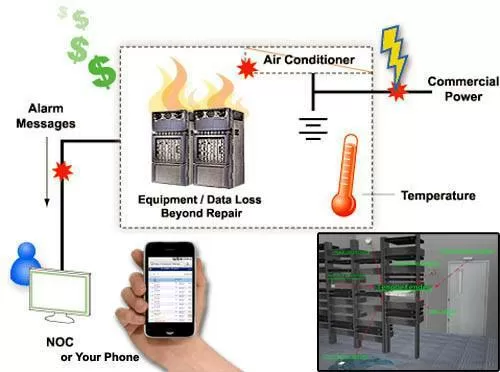Download our free Monitoring Fundamentals Tutorial.
An introduction to Monitoring Fundamentals strictly from the perspective of telecom network alarm management.
1-800-693-0351
Have a specific question? Ask our team of expert engineers and get a specific answer!
Sign up for the next DPS Factory Training!

Whether you're new to our equipment or you've used it for years, DPS factory training is the best way to get more from your monitoring.
Reserve Your Seat TodayYou no doubt have lots of expensive, mission-critical, and revenue-generating equipment across your entire network. If left unmonitored, this equipment is exposed to environmental conditions that threaten to cause malfunctions, shutdowns, and outages.
By deploying good systems monitoring technology, you can prevent these kinds of outages. The key here is good monitoring technology. There are many monitoring solutions out there - but many fail to see the big picture and leave out critical features that you can't live without.

These systems trick you into thinking you're adequately protecting your network, but in reality, you're far from it. You'll be just as vulnerable to a crippling outage if you're using a poorly designed monitoring system as you would be with no monitoring system at all.
When choosing the right solution for equipment and systems monitoring, you want to look for these 5 essential features...
Since you're a professional, you only want solutions that can deliver results. That's why I recommend taking a look at the NetGuardian family of remote telemetry units (RTUs). These RTUs come in various sizes to provide superior remote monitoring and control to sites of all sizes. The standard is the NetGuardian 832A G5, which features 32 discrete alarms, 8 analog alarms, and 8 control relays. This device can be custom-ordered with several options and comes standard with a 30-day risk-free guarantee. If this device doesn't solve your systems monitoring needs then you can return it.
"All the alarm monitoring systems I make are backed by my no-risk, money-back guarantee. If you buy my equipment and you're not satisfied for any reason during the first 30 days, simply return it for a full refund. If my product doesn't solve your problem, I don't want you to have it."
- Bob Berry, CEO, DPS Telecom
Call (1-800-693-0351) or email (sales@dpstele.com) the monitoring experts at DPS Telecom for a free consultation. You can get all your questions asked, design a custom solution for your network, or receive a free ROI analysis. You can also use the form below to get in touch with Mac Smith, who can help you with a fast response.
Equipment Monitoring Tutorial: Building a Solid Foundation for Remote Alarm Monitoring and Control
Management was "Sold" on Monitoring Equipment That Didn't Work
Solutions for Increased Network Reliability: How Remote Monitoring and Control System Can Help
Library of Detailed Application Drawings
Choosing the most Effective Alarm Monitoring Solution
Choosing the most Effective Alarm Monitoring Solution
Essential Real-Time Monitoring Features for Your Network
Does Your Remote Monitoring System Have These 5 Essential Features?
Does Your Remote Fault Monitoring System Provide Detailed Alarm Visibility?
Reduce Drive Time Aggravation with Detailed Alarm Monitoring